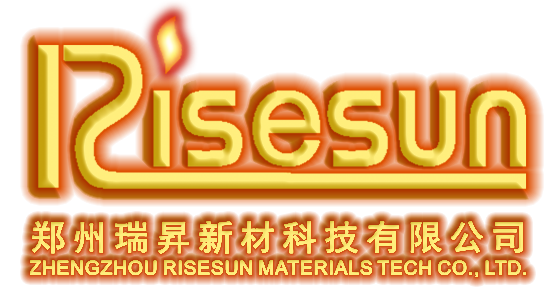17
2025
-
03
SIC Heater Case Studies: Real-World Applications and Results
SIC Heater Case Studies: Real-World Applications and Results Table of Contents 1. Introduction to SIC Heaters 2. What Are SIC Heaters? 3. Advantages of Using SIC Heaters 4. Case Study 1: Industrial Oven Heating 5. Case Study 2: Plastic Processing Industry 6. Case Study 3: Laboratory Applications 7. Case Study 4: Food Processing Efficiency 8. Case Study 5: Automotive Industry Innov
SIC Heater Case Studies: Real-World Applications and Results
Table of Contents
- 1. Introduction to SIC Heaters
- 2. What Are SIC Heaters?
- 3. Advantages of Using SIC Heaters
- 4. Case Study 1: Industrial Oven Heating
- 5. Case Study 2: Plastic Processing Industry
- 6. Case Study 3: Laboratory Applications
- 7. Case Study 4: Food Processing Efficiency
- 8. Case Study 5: Automotive Industry Innovations
- 9. Conclusion
- 10. Frequently Asked Questions
1. Introduction to SIC Heaters
Silicon carbide (SIC) heaters have emerged as a pivotal technology in various industrial processes. Known for their durability and efficiency, these heaters provide superior heating solutions for a wide range of applications. This article delves into several case studies that demonstrate how SIC heaters are utilized across different sectors, showcasing their effectiveness and tangible results.
2. What Are SIC Heaters?
SIC heaters are high-performance heating elements made from silicon carbide, a material renowned for its thermal conductivity and mechanical strength. These heaters can operate at elevated temperatures and are highly resistant to oxidation. They are commonly integrated into industrial heating applications such as ovens, furnaces, and thermal processing equipment.
Key Features of SIC Heaters
- **High Thermal Efficiency**: SIC heaters provide rapid heating with minimal energy loss.
- **Long Lifespan**: Thanks to their robust construction, these heaters last longer than traditional heating elements.
- **Versatile Applications**: SIC heaters can be designed for various environments, accommodating both high and low-temperature applications.
3. Advantages of Using SIC Heaters
The adoption of SIC heaters offers numerous benefits to industries, including:
Energy Efficiency and Cost Savings
SIC heaters utilize energy more efficiently, leading to reduced energy costs and lower operational expenses.
Enhanced Temperature Uniformity
These heaters ensure even heat distribution, significantly improving product quality in processes where temperature control is crucial.
Reduced Maintenance Needs
With their durable design, SIC heaters require less frequent replacements and maintenance, allowing companies to focus on productivity rather than equipment upkeep.
4. Case Study 1: Industrial Oven Heating
In a renowned manufacturing facility, the integration of SIC heaters into their industrial ovens resulted in a 30% reduction in heating time. Prior to the upgrade, the ovens struggled with uneven heat distribution, leading to inconsistent product quality. After switching to SIC heaters, the facility experienced improved thermal control, which led to enhanced product consistency and a significant decrease in energy consumption.
Results Achieved
- **Heating Time Reduction**: 30% faster heating cycles.
- **Energy Savings**: Approximately 20% reduction in energy costs.
- **Quality Improvement**: Enhanced product consistency leading to increased customer satisfaction.
5. Case Study 2: Plastic Processing Industry
A leading plastic manufacturer faced challenges with long cycle times and inefficient heating methods. By implementing SIC heaters in their processing equipment, they were able to cut cycle times by 25%. The rapid response time of SIC heaters helped maintain optimal temperatures throughout the processing phase, resulting in improved material properties.
Results Achieved
- **Cycle Time Reduction**: 25% decrease in cycle times.
- **Material Quality Enhancement**: Improved tensile strength and flexibility of the processed plastics.
- **Operational Efficiency**: Increased throughput without the need for additional equipment.
6. Case Study 3: Laboratory Applications
In a laboratory environment focused on material testing, consistent and precise heating was paramount. The use of SIC heaters allowed for fine temperature control, resulting in successful experiments that demanded strict adherence to thermal protocols. The laboratory noted a significant increase in successful test outcomes post-implementation.
Results Achieved
- **Improved Experiment Success Rates**: 40% increase in successful material tests.
- **Time Efficiency**: Reduction in pre-heating time by 15%.
- **Cost-Effectiveness**: Lower energy costs associated with heating.
7. Case Study 4: Food Processing Efficiency
In the food processing sector, a company struggled with inconsistent heating during cooking processes, which affected product quality. Transitioning to SIC heaters provided precise temperature control and minimized cooking times. Their products not only met safety standards but also maintained their flavor and texture, leading to higher consumer satisfaction.
Results Achieved
- **Cooking Time Reduction**: 20% decrease in cooking times.
- **Product Quality Improvement**: Enhanced flavor retention and consistency.
- **Regulatory Compliance**: Improved adherence to food safety regulations.
8. Case Study 5: Automotive Industry Innovations
An automotive manufacturer integrated SIC heaters into their paint drying ovens to enhance the curing process of automotive paints. The result was a significant reduction in drying times and improved adhesion quality. The company reported achieving a 15% increase in operational capacity due to the faster curing times.
Results Achieved
- **Drying Time Reduction**: 15% faster paint curing.
- **Increased Production Capacity**: Enhanced throughput without additional investments.
- **Improved Paint Quality**: Better adhesion and finish quality of automotive paints.
9. Conclusion
The case studies presented illustrate the diverse applications and remarkable outcomes of utilizing SIC heaters across various industries. By enhancing energy efficiency, improving product quality, and reducing operational costs, SIC heaters are redefining how industries approach thermal processing. The results from these real-world applications not only validate the advantages of SIC heater technology but also encourage further exploration into their implementation for optimized industrial performance.
10. Frequently Asked Questions
1. What is the lifespan of SIC heaters?
SIC heaters typically have a long lifespan, often exceeding 10,000 operational hours when used correctly under appropriate conditions.
2. Are SIC heaters energy efficient?
Yes, SIC heaters are known for their high thermal efficiency, which reduces energy consumption compared to traditional heating methods.
3. Can SIC heaters be used in high-temperature environments?
Absolutely! SIC heaters are designed to operate in high-temperature conditions, making them suitable for various industrial applications.
4. What are the typical applications for SIC heaters?
SIC heaters are used in a wide range of applications, including industrial ovens, furnaces, plastic processing, laboratory heating, and food processing.
5. How do SIC heaters compare with traditional heating elements?
SIC heaters offer advantages such as faster heating times, better energy efficiency, and longer lifespan compared to conventional heating elements like quartz or metallic heaters.
By showcasing these case studies and answering frequently asked questions, we aim to provide a comprehensive understanding of SIC heaters and their critical role in modern industrial applications.



